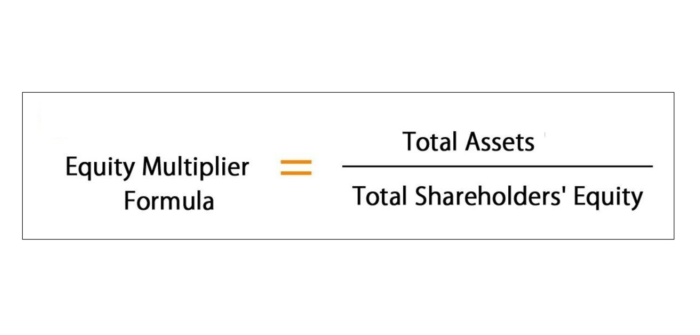
On the other hand, while calculating the dilutive EPS, the denominator includes all possible conversions that can take place and increase the number of shares held by parties. Diluted EPS is always less than the basic EPS, as the denominator in the latter is higher. Companies with options, convertible bonds, etc., disclose both basic as well as diluted EPS in their financial disclosures. Authorized shares are the total number of shares a company can legally issue, while issued shares are the number the company has issued to date. The number of authorized and issued shares may be the same or different, in which case there would be more authorized than issued shares.
Blue Chip Stocks
- Another way for ownership to be projected is by measuring the issued and authorized stocks.
- Weighted averages are also used in other aspects of finance including calculating portfolio returns, inventory accounting, and valuation.
- If it offered 300 shares in an IPO, gave 150 to the executives, and retained 550 in the treasury, then the number of shares outstanding would be 450 shares (300 float shares + 150 restricted shares).
- The number of authorized and issued shares may be the same or different, in which case there would be more authorized than issued shares.
- To illustrate this, let’s take a hypothetical company, ABC Inc., which has 2 million shares outstanding trading at $150 per share, leading to a market capitalization of $300 million.
- These shares are non-dilutive because they do not include any options or securities that can be converted.
From there, simply scroll down until you find the section in the 10-Q or 10-K called “Capital Stock.” All the details you need will be there, plain to see. You’ll see the various other stock categories I’ve discussed, so don’t let that confuse you. One possible point of confusion we haven’t yet mentioned is stock given to employees as compensation, typically in some combination of restricted stock, options, or equity grants. Outstanding shares are the total https://www.bookstime.com/ shares of a company that is being owned by shareholders while float on the other hand is the number of shares that are available for trading by members of the public. As such, index providers such as S&P and others are market leaders in setting a precedent for calculating floating stock methodologies. In certain cases, notably for companies that are aggressively issuing shares or debt, public data should be augmented with a reading of SEC filings.
Everything You Need To Master Valuation Modeling
If there is a difference between the number of shares issued and outstanding, the difference is treasury stock. In other words, a company has issued shares and then bought some of the shares back, leaving a reduced number of shares that is currently outstanding. A company may announce a stock split to increase the affordability of its shares and grow the number of investors.
- In the case of Apple, this shows that the company had 15,552,752,000 shares of common stock “issued and outstanding” as of October 20th, 2023.
- And now that you’re equipped with this foundation of knowledge, all you need to do to figure it out is to go look it up on any company’s balance sheet in their 10-Q or 10-K filing.
- Although they both refer to all classes of a company’s common stock (as opposed to preferred stock), these two metrics are inherently different.
- Charlie as an investor will love to determine the company’s market capitalization and its earnings per share.
- A company’s market capitalization is the current market value of all of its outstanding shares.
- When it comes to stocks, a company’s outstanding and floating shares can provide some very important information about the organization.
Outstanding Shares Definition and How to Locate the Number
- The figure for outstanding shares is useful for an investor to know, especially for an investor that is contemplating buying shares in a company.
- Treasury shares plus outstanding shares together form the total number of issued shares.
- Thus, to raise the required funds, it’s usually necessary to offer the new shares at a notable discount to their current price.
- In this scenario, the company is trying to create an appearance of rapid growth in earnings per share to appear like a solid investment opportunity.
It is a less-commonly used number in the financial reporting of privately-held businesses. The disadvantages of going public include following extra regulations and disclosure requirements. Being a publicly traded company can bring extra scrutiny and increase accounting and other costs.Issuing more shares later also has disadvantages. Shareholders generally don’t like being asked to cough up more money if they don’t wish to have their ownership stake diluted. Rights issues can damage a company’s reputation and make investors want to steer clear.
By contrast, a reverse stock split occurs when a company seeks to elevate its share price. Often, a company does this to meet listing requirements, which often require a minimum share price. Let us consider an example of a company named KLX Inc. in order to illustrate the computation of shares outstanding. During 2018, the company repurchased 0.3 million common stocks and 0.1 million preferred stocks. Based on the given information, Calculate the number of shares outstanding of the company. Basic weighted average shares, on the other hand, represents the above-mentioned weighted average shares outstanding less the dilution of stock options for a specific period.
Along with individual shareholders, this includes restricted shares that are held by a company’s officers and institutional investors. Of course, merely increasing the number of outstanding shares is no guarantee of success; the company has to deliver consistent earnings growth as well. A company’s outstanding shares decrease when there is a reverse stock split. A company generally embarks on a reverse split or share consolidation to bring its share price into the minimum range necessary to satisfy exchange listing requirements. While the lower number of outstanding shares often hampers liquidity, it could also deter short sellers since it becomes more difficult to borrow shares for short sales.
Reverse Stock Split
Authorized shares refer to the largest number of shares that a single corporation can issue. The number of authorized shares per company is assessed at the company’s creation and can only be increased or decreased through a vote by the shareholders. shares outstanding formula If at the time of incorporation the documents state that 100 shares are authorized, then only 100 shares can be issued. As we can see here, Apple’s basic and diluted EPS both increased year-over-year, even though their net income slightly declined.

Invest Smarter with The Motley Fool
- Shares outstanding are useful for calculating many widely used measures of a company, like its market capitalization and earnings per share (EPS).
- A company may authorize buying back some of its own shares in the market if they believe that the market is undervaluing them and there is enough cash on the balance sheet to do so.
- This by no means implies that increasing the number of these shares leads to guaranteed success.
- Here’s what you need to know about the different share counts that publicly traded companies use, as well as how you can calculate the number of outstanding common shares.
- For example, when a company repurchases its shares, they are no longer held publicly but kept in the company’s treasury instead.
It excludes closely held shares, which are stock shares held by company insiders or controlling investors. These types of investors typically include officers, directors, and company foundations. The number of shares outstanding increases with the issue of new shares and stock split, while it decreases with share re-purchase and reverses split. The total number of issued and treasury stock includes both common and preferred stock available in the company balance sheet. The formula for calculating the shares outstanding consists of subtracting the shares repurchased from the total shares issued to date.
Issued Shares vs. Outstanding Shares
Investors calculate the cost basis to determine if their investment has been profitable or not, along with any possible taxes they might owe on the investment. The weighted average number of outstanding shares in our example would be 150,000 shares. We will use 562,500 because in the above calculation, we assigned weights according to the time proportion that the share outstanding figure was unchanged.
